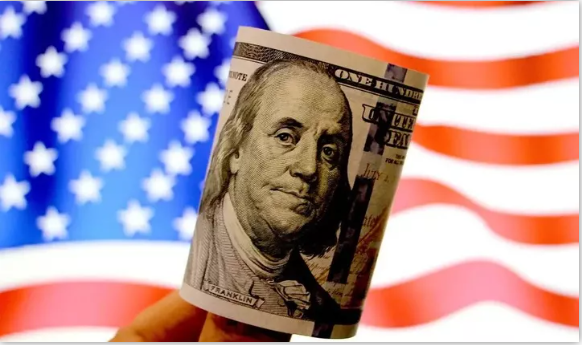
-
 86-21-63895588
86-21-63895588
-
 No.1, Lane 600, Nanchezhan Road, Huangpu District, Shanghai 200011
No.1, Lane 600, Nanchezhan Road, Huangpu District, Shanghai 200011
Release time:2021-03-01
Can America Escape the Stimulus Trap?

By Shang-Jin Wei
Academic Visiting Professor of FISF
Editor-in-chief of Fudan Financial Review
Professor of Finance and Ecnomics of Columbia University

NEW YORK – As US President Joe Biden’s proposed $1.9 trillion economic stimulus package works its way through Congress, former Treasury Secretary Lawrence Summers, a Democrat, as well as many Republicans, argue that the plan is too big. But perhaps a more important question is whether the United States is falling into a “stimulus trap”, and, if so, how to get out of it.
The Biden rescue plan is the federal government’s third attempt within a year to help the US economy recover from the pandemic-induced recession. The previous two stimulus packages have caused asset prices, especially those of stocks and housing, to increase much faster than wages. Because the rich hold more assets than the poor, both in absolute terms and as a proportion of their income, America’s already large wealth gap will likely be widened further.
Rising inequality will spur demands to address it – including through higher taxrates, higher legally mandated minimum wages, and more generous social-transfer programs. A proposal to more than double the federal minimum wage from $7.25 per hour to $15 per hour within four years, even if it does not become a part of this stimulus package, will likely receive more public and Congressional support, once the facts about the widening wealth-gap sink in with the public.
Raising the minimum wage is meant to help the poor. But although the law can compel employers to pay workers at least the minimum wage, it cannot force them tohire people or to establish more businesses in low-wage sectors. A $15 per hour federalminimum wage would likely result in lower job creation than would otherwise bethe case, especially in low-skill sectors. Many would then cite the weak job market and economy as a reason for the next round of stimulative monetary and fiscal policies.
Of course, additional expansionary measures will fuel another wave of asset-price appreciation that outpaces average wage growth, further widening the wealth gap – and prompting calls for still higher taxes and minimum wages, and more social transfers, which will again weaken investment and job growth, justifying continued economic stimulus. In other words, the US can be stuck in a stimulus trap.

Such a scenario is not inevitable. But avoiding it will require three complementary reforms to accompany any economic stimulus.
First, America must upgrade its education system and strengthen the skills base, so that more workers can move into higher-paid jobs. The aim should be to reduce job overlaps in tradable sectors with low-wage Chinese and Mexican workers and even lower-paid Indians or Vietnamese.
By doing this, the US can compete effectively with low-wage countries in the long term. But policymakers first need to recognize that the low-skilled part of the US labor force is too large, and that America’s current education system, from kindergarten to high school, is failing children from low- and lower-middle-income households. Better retraining programs for the existing labor force would also help.
Second, policymakers should aim to makelabor markets more flexible while maintaining decent living standards for all Americans. Here, Amercia could learn from Denmark’s “flexicurity” model, which gives employers the flexibility to hire, fire, and adjust wages as market conditions change, but provides laid-off workers with a generous social safety net so that they can maintain a satisfactory livelihood.
The system’s flexible and reliable contractual work arrangements encourage entrepreneurs to create firms and jobs. Comprehensive lifelong learning programs give workers an opportunity and incentive to improve their skills. And the social security system provides adequate income support during employment transitions.
In a well-designed flexicurity system, minimum-wage increases need to be in line with both overall productivity gains and immigration policy. A minimum-wage rise that exceeds the increase inproductivity will create a two-tier labor market in which some fortunate low-skilled workers hold on to their jobs while many others are unable to find workat the legally mandated wage.
Similarly, setting a high minimum wage while easing immigration policy could lead to an influx of low-skilled immigrant workers. If they find jobs in the grey market by offering to work for less than the legal minimum wage, things would become even more difficult for native-born low-skilled workers.
Just to be clear, I am not advocating eliminating immigration or wage growth, but rather emphasizing that wage growth, productivity growth, and immigration policy need to be considered simultaneously as different pieces of a common puzzle.
The third priority is to encourage US households in middle and low-income brackets to save more by providing greater financial literacy and easier access to low-cost money management tools. American households currently save about 12-14% of their income on average, a much lower share than in Germany, Japan, or China.
The problem is that Americans in the bottom 40% of the income distribution are hardly saving anything, which means their relative wealth lags further behind each time assetprices increase faster than wages. To skeptics who think that low-income households are not making enough money to save, research suggests that they can and want to if they have the right knowledge and tools.[1] If America saved more, it could also invest more, enabling the economy to growa bit faster. And that might reduce the dependence on stimulus packages in the future.
[1] https://www.nber.org/papers/w11680